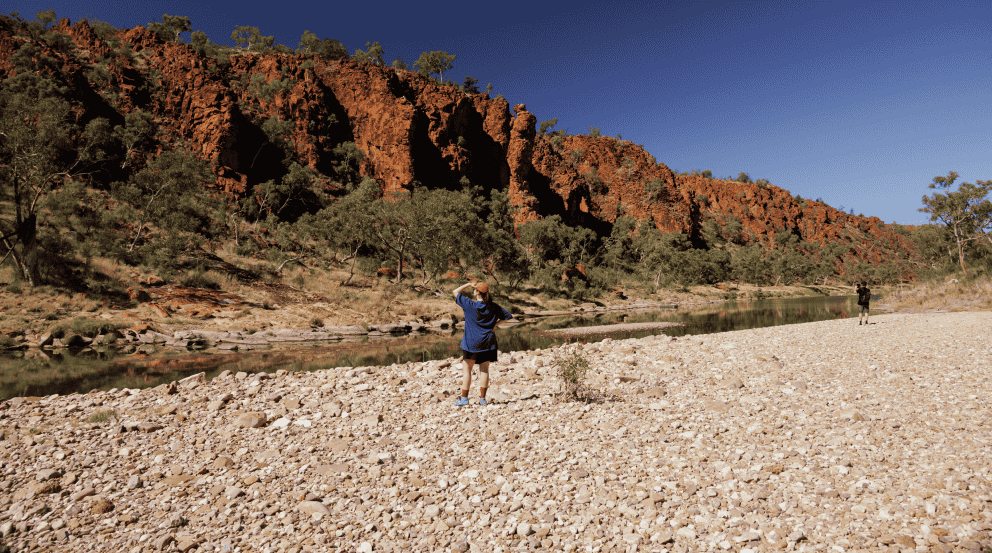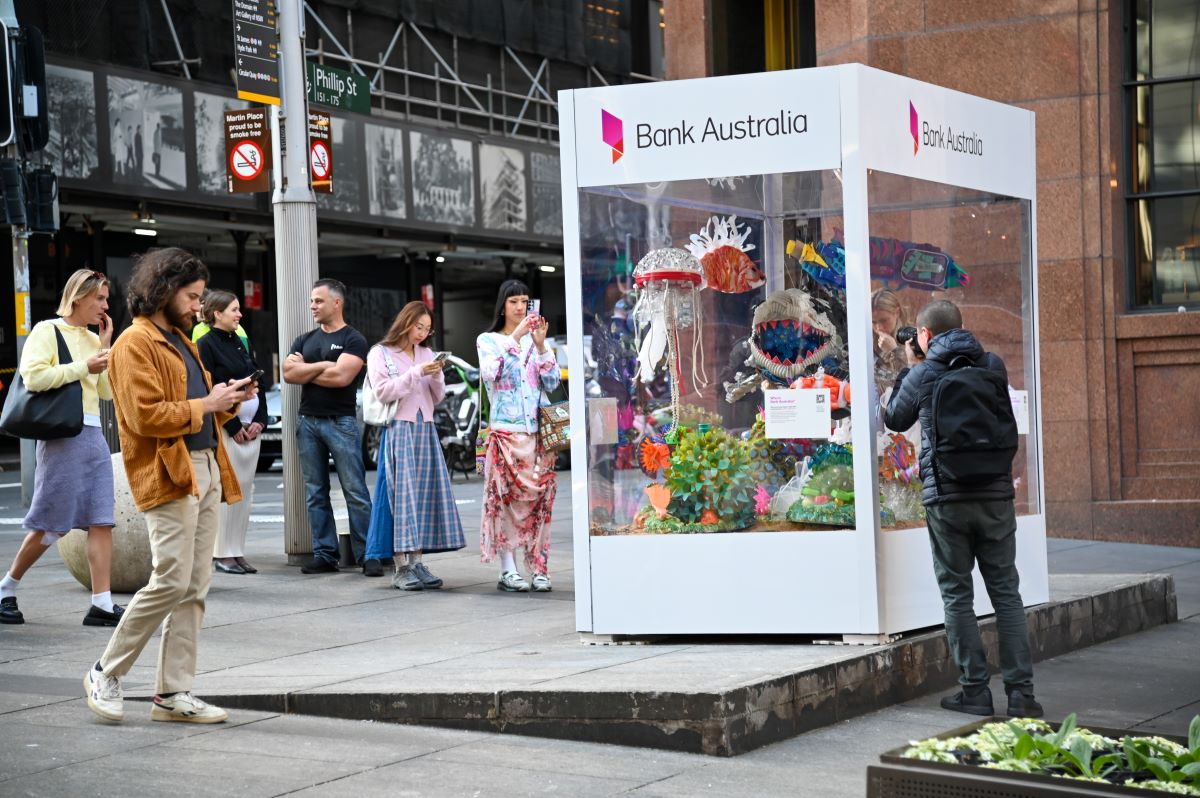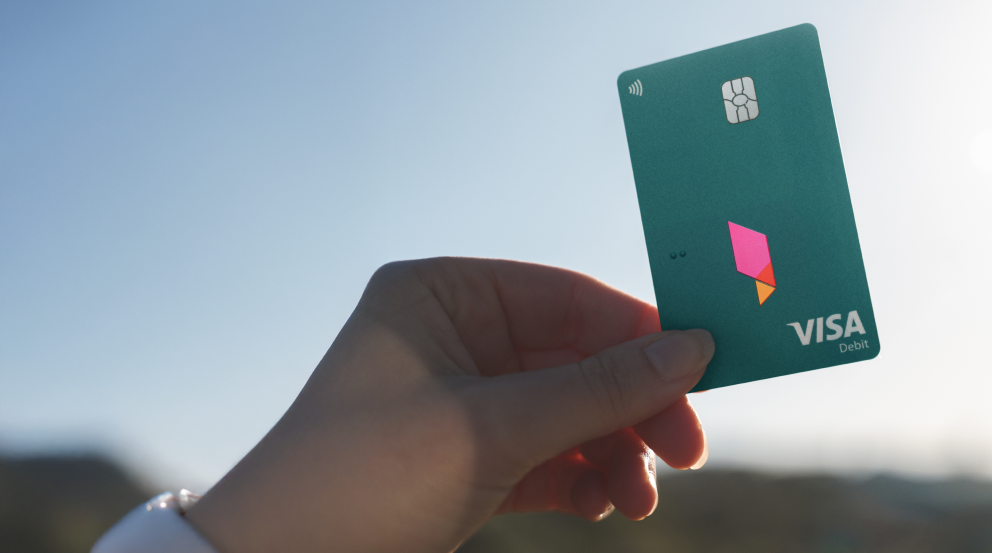When it came time to build their dream home, Bank Australia customers Ashley and Julia had a few key things in mind: comfort, the changing climate, and creating not just a place to live, but a legacy for future generations. Here’s how they built their off-grid passive solar house, and were rewarded with a reduced home loan rate through our Clean Energy Home Loan.
Since publishing this blog, we've updated the eligibility criteria for our Clean Energy Home Loan. Find out how you can get rewarded with a reduced home loan rate for buying, building or renovating a greener home.
When Ashley and Julia took their three children on the iconic Blue Mountains Grand Canyon loop hike a few years ago, Julia was amazed by the incredible feats of engineering on display. “It’s amazing to think that some of these steps were carved into the rocks 100 years ago, and we still use them today,” she says.
It was this same philosophy of longevity that anchored the family as they planned and built their off-grid passive solar home on a block of land on Wiradyuri Country, 15 minutes outside of Bathurst.
“We want this house to be here for a long time,” Julia says. “We're not just building it for us; we're building it for 100 years, 200 years time, so it's here on the planet for future generations to enjoy.”

A clean, green home for the future
Ashley had previous experience working with Green Homes Australia, where he helped apply the principles of passive design and sustainability to other people’s homes, right across Australia. He saw the build as an opportunity to put this experience into practice, creating a home that was efficient, climate resilient and had as little impact on the environment as possible.
Comfort also played a huge role, particularly in respect to the couple’s children Tilly, Daisy and Otis. “We wanted it to suit our aesthetics, our lifestyle and our little people as well,” Ashley says. “You can still have a beautiful home. You can still make decisions on layouts and a flow that matches your family’s needs. You don't have to compromise on a good house just to have a green home.”
Ashley and Julia focused on three key things to build their home:
- Education and community
“The first thing we needed to do was get informed,” Ashley says. And while helpful to have, a background in green homes isn’t by any means essential. “There are so many resources out there,” Ashley says. This includes Facebook groups like ‘My Efficient Electric Home’ (and the affiliated handbook), government guides like yourhome.gov.au, and – perhaps most importantly – finding a network of like-minded people. “Talk to others who are either building or renovating in a sustainable way,” Julia says. “They're generally ready and willing to share their knowledge and advice.”

- Passive design and building materials
Next, Ashley and Julia considered their home’s design, building materials and finishes. Their focus? Simple and durable materials that come from the earth. “Those fundamental principles of design and material choice gets you 80% of the way,” Ashley says. “There's a hundred choices in a home that can have a different impact on the planet.”
Every detail in the home was considered – from the rammed earth walls that hold thermal mass and regulate the internal temperature, through to the orientation of the home, ample insulation, double-glazed windows to retain heat, and the use of local materials wherever possible. In fact, the timber used to create the kitchen island was milled by Ashley himself, using a tree his grandmother planted near the property.
“It helps to constantly question things,” Julia says, which is particularly important if you’re going off the typical path laid out by a building industry focused on maximising profits and convenience. “Always think about what you're doing, and why you're doing it.”

- Energy-efficient active systems
Finally, Ashley and Julia focused on their active systems. They wanted to make use of the natural environment to heat and cool their home as much as possible, and make sure no appliances were using excess energy. “The most important thing to us is how the house performs,” Ashley says. “Being off grid means our home has to be as effective as possible to heat and cool and run our lives, just using the sunshine that falls on our heads.”
The shed that was their temporary dwelling while they built the home was already fitted with solar panels and a battery, and now acts as the “power station” that runs the whole property. They’ve also installed a hydronic radiator system that runs through the house, a heat pump for hot water, and energy-efficient lighting and appliances, including a split oven. “We realised that you don't have to heat up a whole oven to cook cake – you only need a tiny bit of energy,” Ashley says.
There are fans in each room, and reverse-cycle air conditioners, which they plan to only use in extreme weather events. An energy monitor helps the family keep track of their real-time usage, and all of their water comes from the tank on their property.
“We don’t have endless amounts of water or endless amounts of power,” Julia says.
“And that’s alright,” Ashley adds. “Sometimes we'll have to make a compromise – and what's wrong with doing that for the benefit of the planet?”
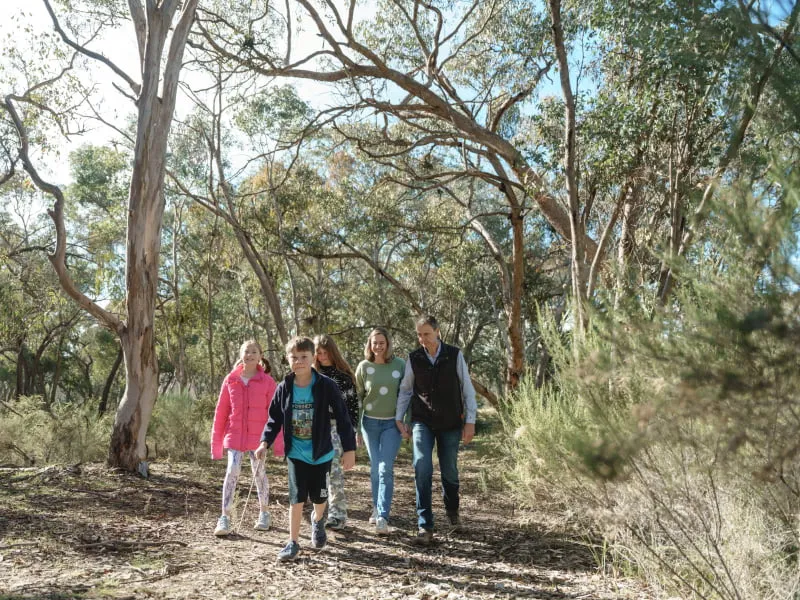
Being rewarded through the Clean Energy Home Loan
Ashley and Julia decided to join Bank Australia because they were relieved to finally find a bank that reflected their values. “We support ethical choices in our life everywhere,” Julia says. “So where we bank is really important to us, too.”
“You can do a lot of good in the world by putting your money in the right places,” Ashley adds.
Because of their home’s 7.6 energy star rating, they were eligible for Bank Australia’s Clean Energy Home Loan.
“It's great that Bank Australia offers the Clean Energy Home Loan,” Ashley says. “When you build a house like this, it’s a more affordable, more sustainable home, so it's great to be rewarded to go that way.”
And it’s not the only way their sustainable home is saving them money. Being off grid also has its benefits. “We haven't had an energy bill for six years,” Julia says. “And it is brilliant! We do not miss them at all.”
While the kids are currently more excited to have their own rooms after moving out of the shed, Ashley and Julia know that one day they will fully appreciate the careful planning that has gone into their comfortable, climate-conscious family home.
“A big part of what we’re trying to do out here is model the way you can live a life that touches lightly on the planet,” Ashley says. “We want to teach our kids what actually happens in nature and to be attuned to its limits.”
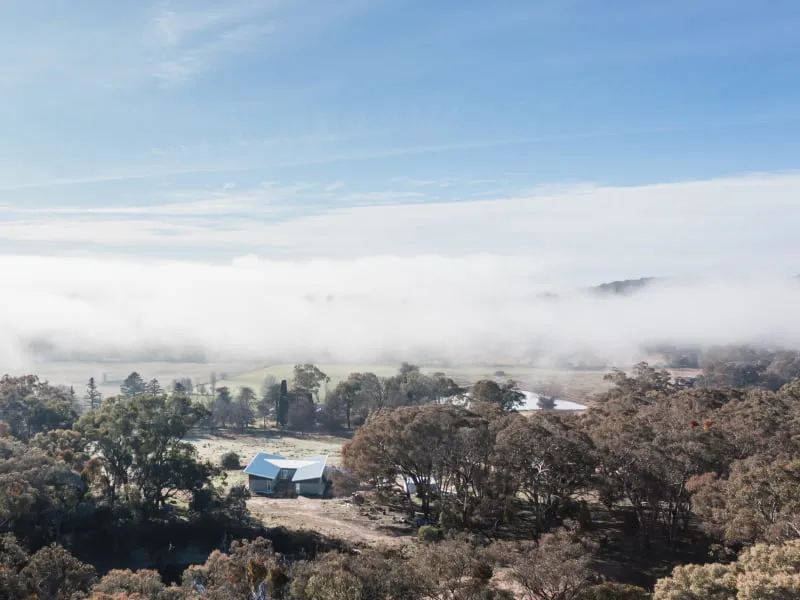
Are you looking to build or upgrade your own home to make it more energy efficient and sustainable? Find out more about Bank Australia’s award-winning Clean Energy Home Loans.




